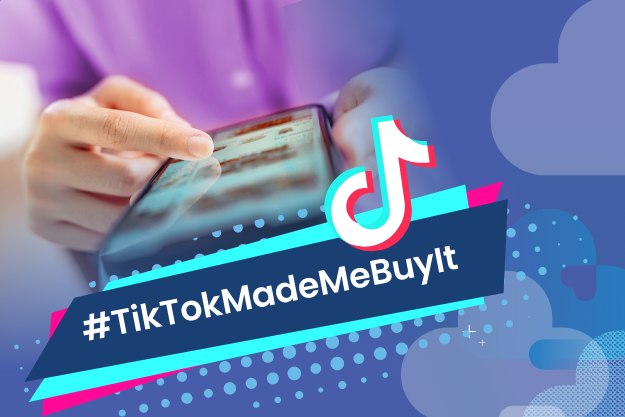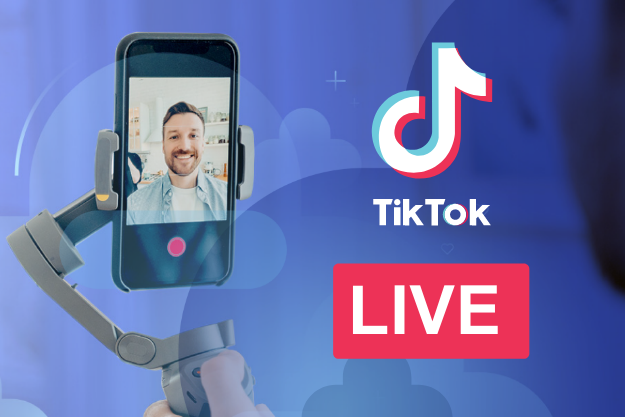TikTok has exploded since its launch in 2016, now boasting nearly 1.7 billion global users. What was previously seen as a lip-syncing app for teenagers has attracted users from every demographic, serving an array of content from educational video clips to live shopping. Like legacy platforms before it, TikTok has evolved tremendously within a short window of time and has arguably transcended the label of "social media platform," becoming an ecosystem complete with community, news, shopping, and more.
Here's a rundown of how TikTok is far more than just a "social media platform":
1. TikTok as a search engine
TikTok isn't usually what comes to mind when you think of a "search engine." However, the platform has demonstrated that it can be used as just that. Because of its highly personalized nature, and ability to deliver bite-sized information in video clips, users are increasingly gravitating towards TikTok to learn, discover, and even shop. In fact, 40% of Gen Z are using TikTok for search over Google. This demonstrates how the demands of the modern user are changing as short, visual content becomes preferential.
That doesn't mean that brands should abandon their Google strategy, placing all bets on TikTok. Instead, brands need to be more adaptable in their approach and leverage SEO optimization in their TikTok posts to ensure they are discoverable. Leveraging the right keywords and hashtags in TikTok posts not only increases your chances of being found within the platform, but also outside of it, as search engines like Google have already started to pull in videos from TikTok and Instagram into their search results.
2. TikTok as eCommerce
TikTok has grown from a pure source of social media entertainment to a place where people can discover new products and ultimately complete purchases. The hashtag #TikTokMadeMeBuyIt has often been used as a proof point for the powerful influence TikTok has over product discovery and promotion. In the past 4 months, videos with the #TikTokMadeMeBuyIt hashtag have accumulated over 15 billion views.
The platform has clearly recognized its potential as an eCommerce powerhouse and has launched initiatives to compete with other online retailers such as Shein and Amazon. As of August 2023, TikTok is on track to launch a marketplace platform called the TikTok Shop Shopping Center that would focus on selling Chinese-made items from clothing to beauty-targeted U.S. audiences.
Leveraging TikTok as an eCommerce platform is still in its infancy but the experiment is already seeing big returns in Asia. In fact, Southeast Asia is targeting $20 billion in revenue in 2023 from its Shopping Center, which demonstrates a clear demand from users to have a unified experience - all in one app. The question now is if the shopping experience will take off in the U.S. While only time will tell, brands can already begin to leverage TikTok as a part of their commerce strategy via the means already available such as advertising and influencer marketing.
3. TikTok as a music streaming platform
If there's one thing TikTok is known for, it's music. Through trends and challenges, TikTok has given rise to unsuspecting songs and artists. And it's not just new songs that have become viral sensations; even older songs have made a comeback, bringing them back into the limelight. No social media platform to date has had such a powerful connection to the music industry as TikTok has. It's a component of the app that fuels creativity, allowing users (and brands) to connect by pairing their own content with trending songs.
TikTok has been smart to see the potential of music and how it relates to their in-app experience. In Brazil and Indonesia, TikTok has already begun its venture into music streaming with TikTok music. The service not only enables subscribers to download songs, but also integrates its video editing capabilities into specific features that can make musical content creation easier than ever before.
4. TikTok as a news source
Users turning to social media platforms as a source of news has been a common trend in recent years. What makes TikTok so different from the platforms before it is the increase, of users turning to the app to receive information — especially with U.S audiences. According to Pew Research Center, about a quarter of U.S. adults now receive news from TikTok. Younger audiences make up the most of this cohort, with the majority of users falling into the 18-29 category.
Of course, there are ethical concerns associated with the dissemination of news via social media, as we saw play out in the 2020 U.S. elections. TikTok has already taken steps to mitigate potential threats by banning campaign fundraising and requiring that all government and politician accounts be verified.
What this shift does signal is that media companies have an enormous opportunity to package news and live updates via TikTok to provide younger audiences with credible information. Washington Post has embraced the power of short-form video and is often cited as one of THE news platforms to follow and gain inspiration from. As of today, the profile now boasts more than 1.6 million followers, with an impressive 82.1 million cumulative Likes.
The takeaway
TikTok's remarkable growth and expansion have turned it into a versatile ecosystem rather than just a basic social media app. With its search engine functions, eCommerce opportunities, music streaming features, and emergence as a news hub, it has extended its popularity beyond the initial teenage user base. As brands and users continue to explore its potential, TikTok's impact on various aspects of contemporary living is expected to increase even more in the times ahead.


































